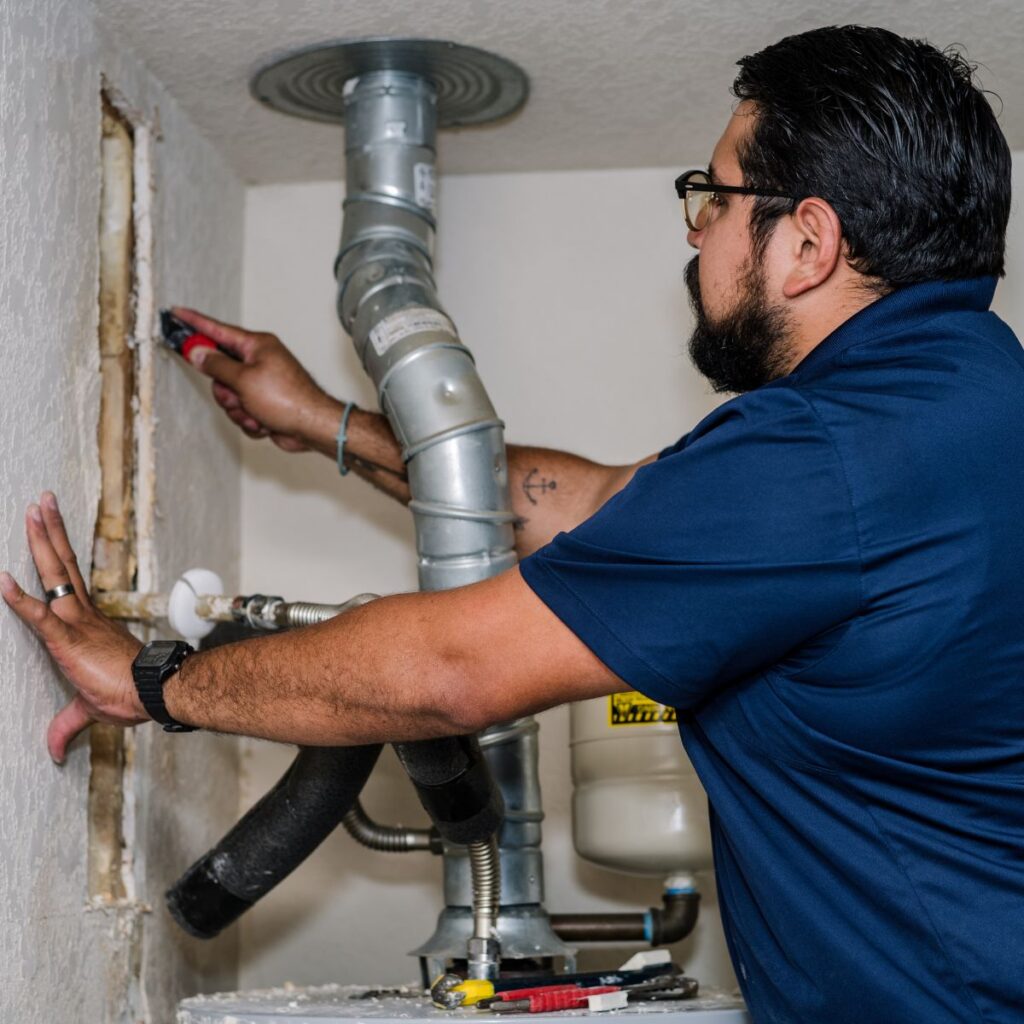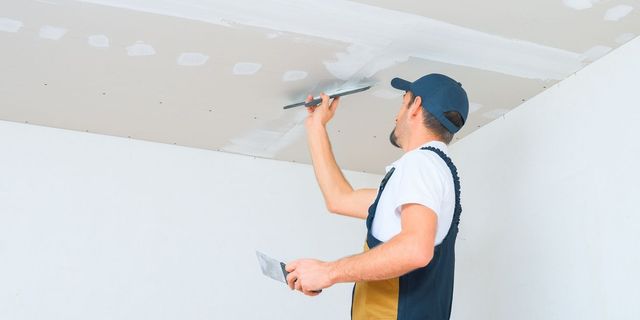Drywall Repair Ogden UT offers dependable services that complement Interior Painting.
Wiki Article
Discover the most effective Practices for Successful Drywall Repair Service and Setup
The art of drywall repair and installation requires a mix of skill and precision. Understanding the important devices is important for accomplishing a seamless coating. Recognizing the step-by-step process can make a significant distinction in the result. Correct strategies for taping and mudding are also vital. What continues to be is the knowledge of upkeep that ensures long life. These aspects together create a polished outcome worth discovering better.
Vital Tools for Drywall Repair Service and Setup
When undertaking drywall repair work and installment, having the right tools can substantially improve the performance and quality of the job. An utility blade is important for reducing drywall sheets precisely, while a drywall saw can aid in making more detailed cuts. Taping blades, offered in different sizes, are important for using joint compound smoothly and equally. A drywall sander, preferably with a dust collection feature, aids attain a refined surface, decreasing the need for comprehensive cleaning.In addition, a determining tape guarantees exact dimensions, and a degree makes sure that installations are straight and plumb. Safety and security equipment, including dirt masks and safety glasses, should not be forgotten to secure against particles and dust. Ultimately, a stud finder aids in finding framing members, ensuring secure installment. By gearing up oneself with these necessary tools, the repair and installation process comes to be much more convenient and causes a professional-quality result.

Step-by-Step Guide to Patching Holes
Covering openings in drywall requires a methodical method to ensure a smooth fixing. First, the location around the opening have to be cleaned and any kind of loose particles eliminated. For tiny openings, a putty knife can be made use of to apply a light-weight spackle, pressing it right into the hole and smoothing the surface. After it dries out, sanding is vital to create a level finish. For larger openings, a patch of drywall might be essential. This entails cutting a piece of drywall a little bigger than the opening, safeguarding it to the wall surface with screws, and utilizing joint compound to cover the joints. When the compound dries, it should be fined sand smooth. Topping the patched area before painting will assure an even finish. Complying with these actions will certainly result in a professional-looking repair work that mixes perfectly with the bordering wall surface.Methods for Smooth Drywall Installment
Achieving smooth drywall setup demands mindful planning and implementation. First, it is vital to cut and gauge drywall sheets accurately to decrease gaps. Using an utility blade, installers should rack up the board prior to breaking it along the cut line, ensuring clean edges. Properly lining up the sheets is important; beginning with the top and working down assists preserve uniformity.Attaching drywall to the studs requires consistent spacing, commonly every 16 inches, using screws instead of nails for better hold. This approach lowers the threat of pops gradually. In addition, startling the joints in between sheets improves structural stability and decreases the visibility of joints.
Finally, making use of Website the best thickness of drywall for specific areas-- such as moisture-resistant enters restrooms-- additional adds to a remarkable surface. Adhering to these strategies will certainly bring about a smooth and professional-looking setup, discover here setting the stage for the subsequent finishing processes.
Completing Touches: Insulation and Mudding
Ending up touches, such as taping and mudding, play an essential function in achieving a refined drywall surface. Taping involves applying a slim strip of drywall tape over the joints and joints, making certain a seamless appearance. This procedure assists prevent splits and produces a solid bond between drywall sheets. It is essential to pick the appropriate kind of tape, with paper and fiberglass fit together being the most usual options.Mudding, or using joint compound, follows insulation. This substance fills out gaps and smooths out the surface for an uniform coating. It is typically used in multiple layers, with each coat needing to dry prior to sanding. Appropriate technique includes feathering the sides to mix the compound into the bordering drywall, reducing presence.
When finished correctly, taping and mudding improve both the architectural and visual honesty of the drywall installation, resulting in a professional-quality finish.
Tips for Maintaining Your Drywall After Setup

Additionally, preserving a regular indoor humidity degree can protect against warping or mold and mildew growth. Utilizing a dehumidifier in wet areas, like basements, is recommended. It's additionally valuable to occasionally repaint areas that reveal wear, as this secures the underlying product. Lastly, when relocating furniture or setting up components, care should be exercised to avoid damaging the drywall. By following these maintenance suggestions, property owners can extend the life of their drywall, protecting it continues to be an appealing attribute of their insides.
Often Asked Inquiries
What Security Equipment Is Needed for Drywall Repair Work and Installation?
For drywall repair service and installation, necessary safety and security gear consists of safety and security goggles to shield eyes, dirt masks to stop inhalation of fragments, gloves for hand protection, and knee pads for comfort during prolonged kneeling. drywall contractor.Exactly how Do I Identify the Drywall Thickness Needed for My Project?
To identify the drywall thickness required for a project, one should think about the wall surface's architectural demands, regional building regulations, and the planned use the room, commonly going with 1/2-inch or 5/8-inch drywall.Can I Repair Drywall Without Removing Furnishings From the Area?
Yes, drywall can be fixed without getting rid of furnishings from the space. Cautious planning and safety actions can reduce mess, enabling effective repair work while keeping surrounding items risk-free from dust and damage throughout the process.What Kinds of Drywall Are Ideal for Different Settings?
Moisture-resistant drywall is perfect for kitchen areas and shower rooms, while soundproof drywall matches shared walls in homes. Fire-rated drywall is best for garages, and conventional drywall works well generally living locations, guaranteeing longevity and suitability for different environments.For how long Does It Take for Drywall Mud to Dry Completely?
Drywall mud normally takes 24 to 2 days to completely dry entirely, relying on aspects like humidity and temperature level (drywall contractor). Thicker applications might call for longer drying out times, while thinner layers can dry out extra swiftly. Proper ventilation help drying
The art of drywall repair work and setup calls for a mix of skill and accuracy. When undertaking drywall fixing and installation, having the right tools can significantly improve the efficiency and top quality of the work. An energy blade is vital for cutting drywall sheets specifically, while a drywall saw can help in making much more intricate cuts. Attaining smooth drywall setup demands cautious preparation and execution. Moisture-resistant drywall is perfect for shower rooms and cooking areas, while soundproof drywall fits shared walls in apartment or condos.
Report this wiki page